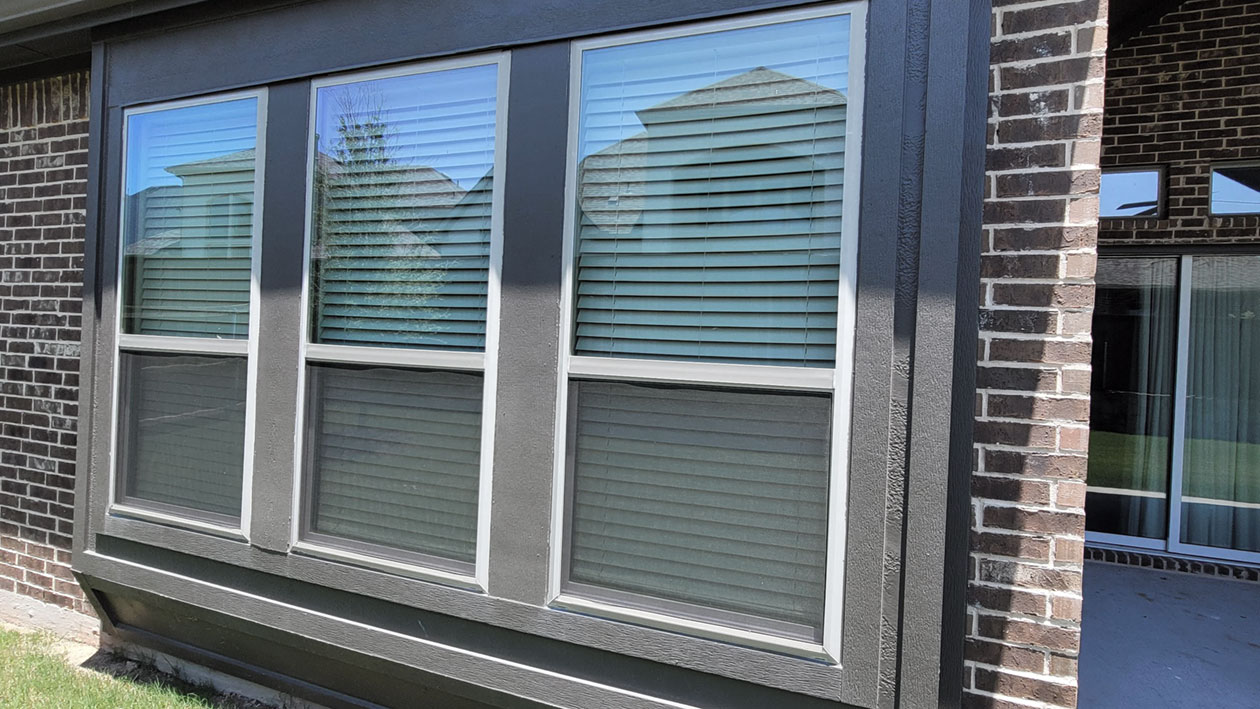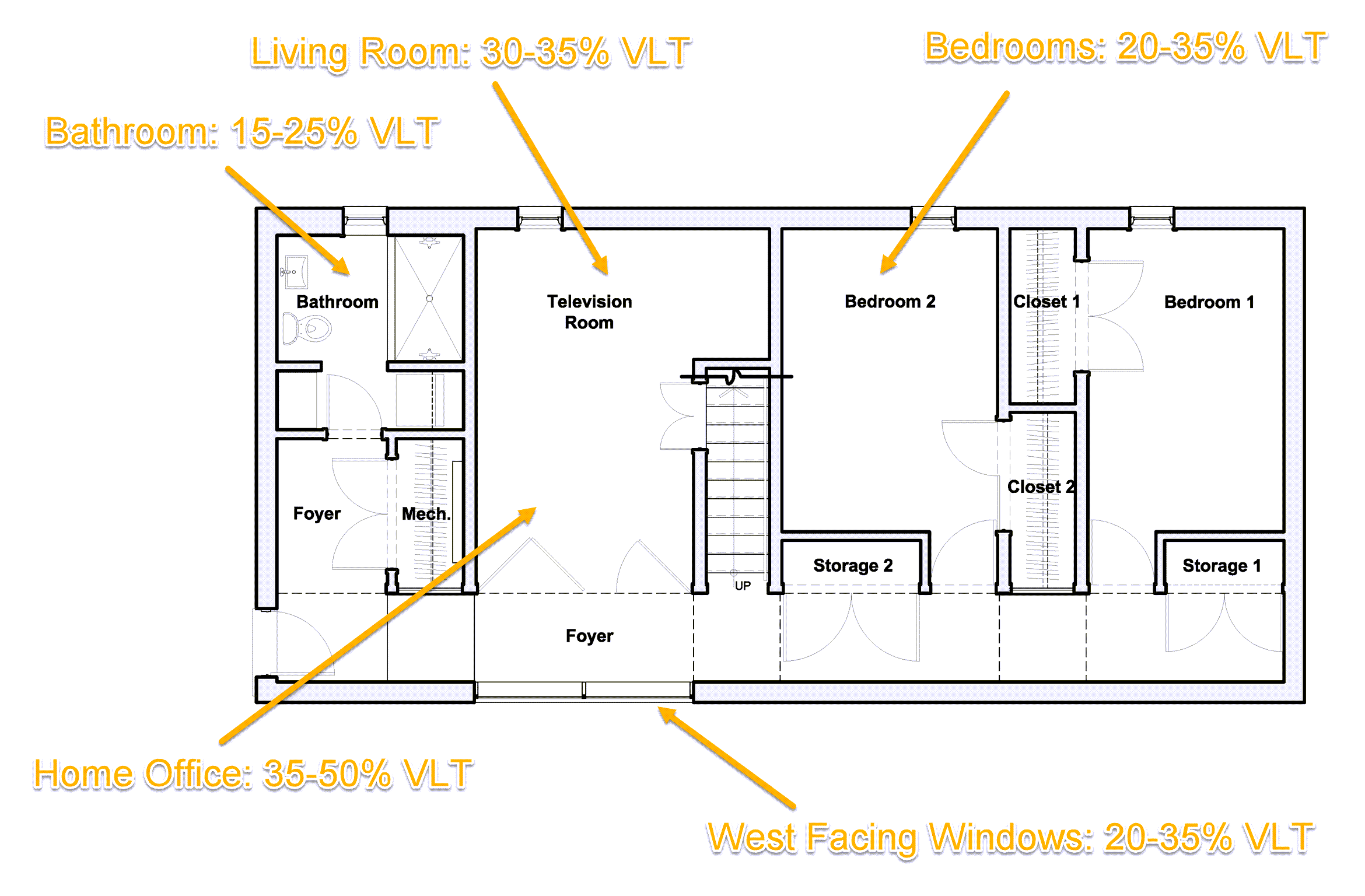
Let’s talk about something that’ll genuinely make a difference to your home’s comfort and your energy bills. You’re standing in your lounge room at 2 PM on a scorching summer’s day, squinting at your TV screen whilst the sun beats mercilessly through your windows. Sound familiar? That’s where window tinting comes in.
After spending fifteen years in the window film industry across Sydney, New South Wales, I’ve helped countless homeowners solve this exact problem. The question isn’t whether you should tint your windows – it’s finding that sweet spot between blocking the heat and keeping your home bright enough to actually live in.
Understanding VLT: Your Guide to Window Tint Darkness
When we talk about window tint darkness, we’re really talking about Visible Light Transmission (VLT). This percentage tells you how much light passes through your tinted glass. Here’s the thing that trips most people up: the lower the VLT percentage, the darker your tint becomes.
Think of it like this – a 20% VLT film blocks 80% of the light coming through your windows. A 50% VLT film blocks half the light. Most residential window tints fall between 20-50% VLT, giving you plenty of options to find your perfect balance.
Unlike automotive tinting, there are no legal restrictions on home window tinting darkness in Australia. You’re free to choose whatever VLT suits your needs, though I’d recommend staying above 20% VLT for main living areas to avoid making your home feel like a cave.
Finding Your Perfect Darkness Level
For Privacy-Focused Areas
If privacy is your main concern – think bedrooms, bathrooms, or ground-floor windows facing the street – darker tints below 20% VLT work brilliantly. These films make it nearly impossible for outsiders to see in, even with lights on inside. Just remember that you’ll sacrifice quite a bit of natural light.
For Heat and Glare Control
You don’t need to go super dark to tackle heat and glare effectively. Films between 50-70% VLT still make a noticeable difference, whilst maintaining that bright, airy feeling in your home. For more serious heat issues, particularly on west-facing windows, consider stepping down to 35% VLT.
For Living Areas
Most Australian homes benefit from 20-35% VLT in main living spaces. This range provides significant heat reduction and glare control whilst allowing enough natural light to keep rooms comfortable for daily activities.
The Science Behind Heat Rejection
Let me share something that might surprise you – darkness doesn’t always equal better heat rejection. Modern ceramic films can block up to 60% of solar heat whilst maintaining 35% VLT. These films target infrared radiation specifically, letting visible light through whilst stopping the heat.
3M’s research with CSIRO shows that solar control window films can reduce cooling requirements by more than 30% during summer. That’s not just comfort – that’s real money staying in your pocket every quarter when the electricity bill arrives.
Film Type Performance Comparison:
- Ceramic films: Excellent heat rejection, no signal interference, typically 30-70% VLT
- Metallised films: Strong heat reflection, can affect mobile signals, 5-50% VLT
- Dyed films: Budget-friendly, moderate heat rejection, 5-50% VLT
- Carbon films: Durable, good heat rejection, matte finish, 5-40% VLT
Room-by-Room Recommendations
Bedrooms: 20-35% VLT works well here. Dark enough for privacy and good sleep, but not so dark that you need lights on during the day.
Living Areas: Stick to 30-50% VLT. You want heat control without sacrificing the natural light that makes these spaces inviting.
Bathrooms: Go darker at 15-25% VLT for privacy, though you’ll likely have artificial lighting anyway.
Home Offices: 35-50% VLT reduces screen glare whilst maintaining good working light levels.
West-Facing Windows: These cop the worst afternoon sun. Consider 20-35% VLT to handle the heat without making rooms too dark.

Climate Considerations for Australian Homes
Australia’s diverse climate means your location matters enormously. In Queensland’s humid heat, darker tints (15-35% VLT) provide excellent relief from both heat and glare. Down in Melbourne’s more temperate climate, lighter tints (35-50% VLT) might be perfect – you still get heat reduction without losing valuable winter sun.
I’ve installed films across both climates, and the difference is remarkable. In Cairns, homeowners consistently choose darker films because the sun’s intensity is relentless. In Canberra, they often prefer lighter options to maximise natural light during cooler months.
The Real-World Impact
One project that stands out involved a Sydney family with massive west-facing windows. Their lounge room was unbearable from 2 PM onwards during summer. We installed 25% VLT ceramic film, and the change was immediate – the room temperature dropped by 8 degrees, and they could actually use their lounge room in the afternoon again.
The mum told me later that their electricity bill dropped by $200 that first quarter. The kids stopped complaining about the TV glare. Simple solution, massive impact.
For most Australian homes, I recommend starting with 35% VLT in main living areas. It’s light enough to maintain that bright, welcoming feeling whilst providing meaningful heat and glare reduction. You can always go darker in specific rooms based on your needs.
Remember, window tinting isn’t just about immediate comfort – it’s about protecting your furniture from fading, reducing your energy bills, and making your home more liveable year-round. In our harsh Australian climate, it’s one of the most practical improvements you can make.

